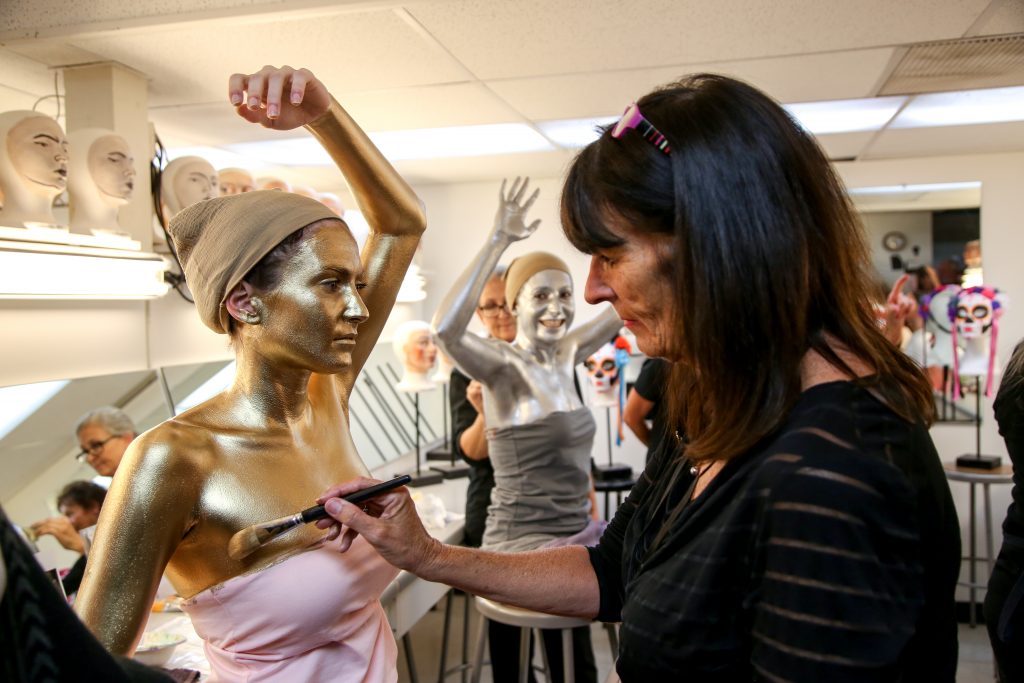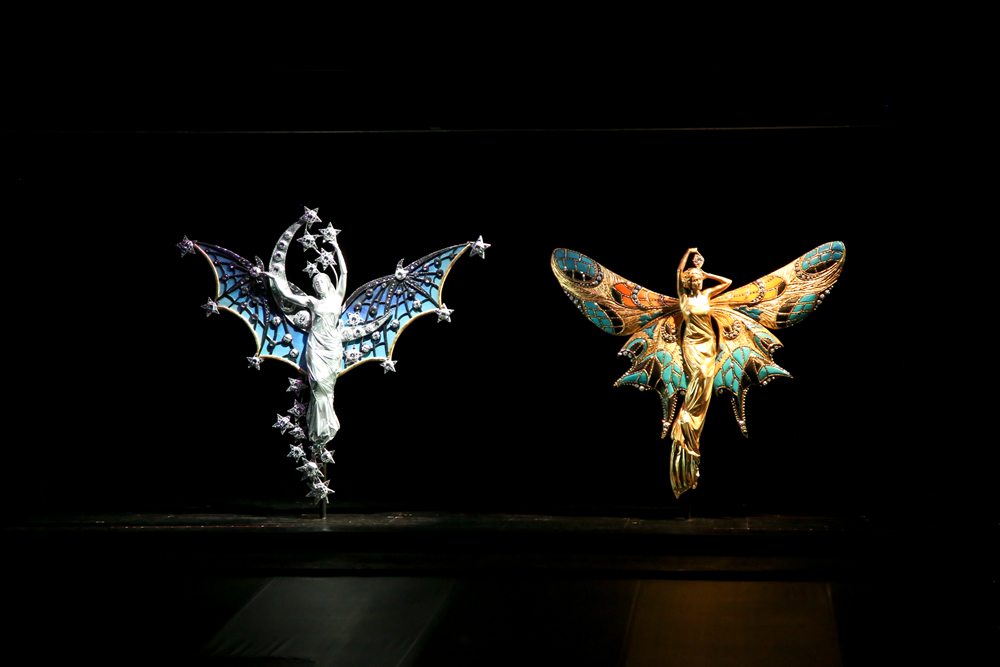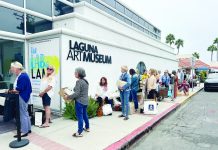
The quintessential partners Adam and Eve clearly enjoyed an idyllic start, but the situation turned south when Eve quested for knowledge. The iconic couple immortalized in a 1615 painting “Adam and Eve in the Garden of Eden” comprises the opening scene in this year’s Pageant of the Masters, where living people re-enact works of art.
Conceived by Diane Challis Davy with the script by Dan Duling and narration by Richard Doyle, the summer production titled “Partners” celebrates creative unions in the visual and performing arts, fiction and science and points between.
Under Challis Davy’s creative eye, partnerships can also include merely depicted ones such as in David Hockney’s “American Collectors,” a portrait of Fred and Marcia Weisman and Henry Matisse’s “Tea,” a rendition of Parisian salonistas Gertrude Stein and Alice B. Toklas. Then again, Harriet Whitney Frishmuth’s “The Dancers” stands for the human connection inherent in creativity.

If partnership involves the bestowing of gifts, that part is stunningly represented by two Art Nouveau creations “La Belle de Nuit” and “Butterfly Brooch.” Bravo to the svelte ladies embodying the central female figures and their costume and make-up artists.
The two-act production honors an influential local partnership, Roy and Marie Ropp, invited to take over presentation of the “living pictures” in 1935. While Robb worked on bringing paintings to life as a stage production, his wife proved equally valuable at selecting music and devising costumes from thrift store finds, says a program essay.
Over 80 years, production values change. And this year’s Pageant reflects its evolution to keep pace with the times. Some traditional elements remain, such as volunteers embodying characters in paintings such as Gerolamo Induno’s “The Kiss on the Hand,” standing stock-still among bucolic scenery.
But this year’s production brings movement, too. Perhaps even a surfeit, considering that the final scenes in act one are comprised of six movie posters featuring soft-shoe stars Fred Astaire and Gene Kelly and their partners. In each, professional dancers re-enact bits of movie choreography accompanied by the musical score.
Other novelties include a character traversing the Irvine Bowl on a zip line, to the delight of the audience.
Explorers of the American West Lewis and Clark garnered three paintings including the iconic Edgar S. Paxton 1912 canvas “Lewis and Clark at Three Forks” and one replica of a bas relief sculpture by Leo Friedlander.
The Wright Brothers get comparatively short shrift with “Wright Brothers Flight, 1940.”
The second act summons a colorful tribute to Frida Kahlo and Diego Rivera, a pair famous for individual artistic prowess, their politics and erotic exploits.
Kahlo’s 1932 “On the Borderline” bears witness to her being pulled between cultures, with her native country winning. “Dream of a Sunday Afternoon in Alameda Park,” a highly populated scene featuring Catrina, the traditional “Day of the Dead” skeleton dressed in bourgeoise finery, is Rivera’s creation.
As an extra novelty, nimble-footed “skeletons” and others in Mexican folk dress dance through the isles, including Festival of Arts board member Anita Mangels.
But then, at a width of roughly 33 feet, Rivera’s magnificent “Detroit Industry” steals the spotlight in this segment. Festival backdrop artist David Cooke described it as the largest backdrop done to date.
History and science come to life in the brilliant tribute to Marie-Anne and Antoine Lavoisier, dubbed “the father of modern chemistry.” With the help of a dramatic backdrop, the audience learns that after Antoine was executed during the French Revolution, his wife, whom he married while she was still a teen, preserved the couple’s research records as exemplified in her accomplished “Laboratory Sketch,” c. 1789.
Traditionalists will take delight in the depiction of Swedish painter Carl Larsson and his young wife Karin with whom he had eight children. “Outdoors Blow the Summer Winds,” from 1903, shows a happy family enjoying a bucolic summer.
At show’s end, tradition also prevails with the presentation of Leonardo DaVinci’s “Last Supper.” On two previous occasions, the Pageant chose to substitute a surreal, Salvador Dali version of the fateful repast, but to far less aplomb.
Since then the Pageant has returned to the DaVinci as originally debuted by the Ropps in 1936.
The show continues nightly at 8:30 p.m. in the Irvine Bowl on the grounds of the Festival of Arts, 650 Laguna Canyon Road, through Aug. 27. Ticketed separately from art show admission. (800) 487-3378





[…] by Diane Challis Davy, “The Grand Tour” is this year’s theme of the Pageant of the Masters, presented in two […]